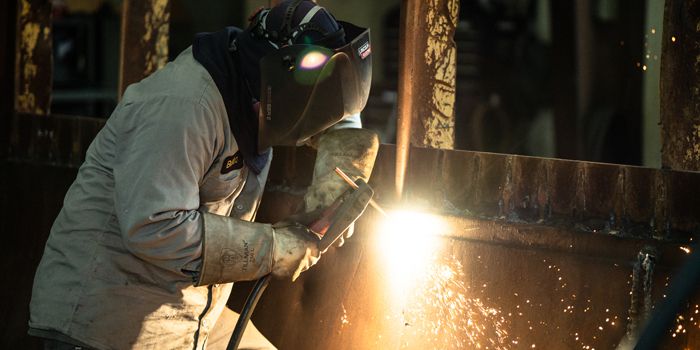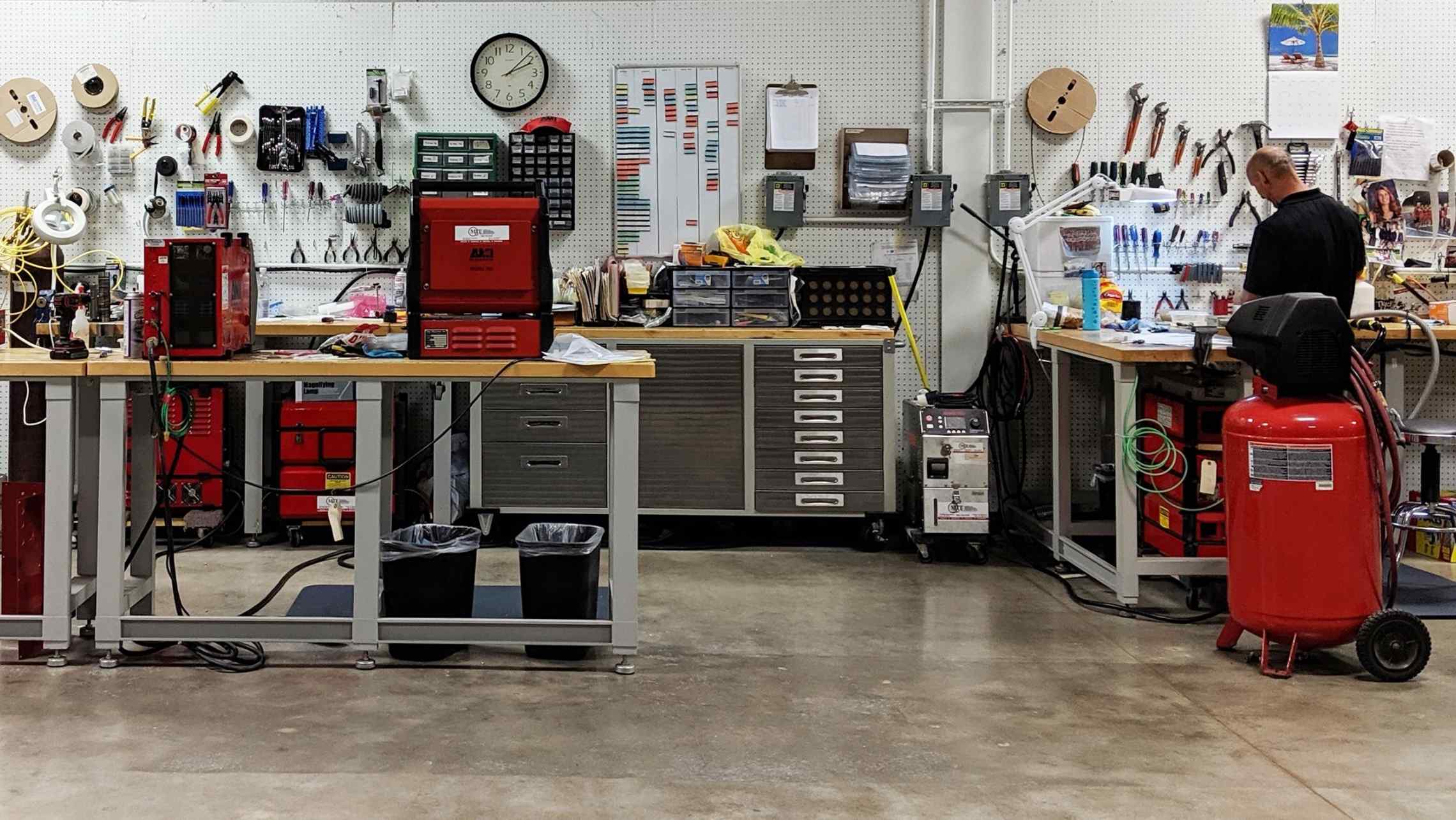Common Welding Repair Issues and Just How to Address Them Effectively
Welding fixings frequently experience a variety of issues that can jeopardize the honesty of the last product. Common problems consist of poor infiltration, porosity, and misalignment, to name a few. Each problem offers special difficulties that require details approaches for resolution. Recognizing these problems is necessary for welders intending to improve their results and skills. This discussion will certainly discover these usual welding fixing issues and reliable approaches to address them.
Inadequate Infiltration
Insufficient infiltration takes place when the weld steel stops working to fully fuse with the base product, resulting in weak joints and possible architectural failings. This problem often originates from not enough warm input, inaccurate electrode angle, or incorrect welding speed. Welders may experience insufficient infiltration as a result of a miscalculation of the required parameters for a particular product density or kind. Furthermore, contamination on the base product's surface can prevent efficient bonding, intensifying the trouble. To attend to insufficient infiltration, welders should ensure appropriate settings on their devices and maintain a clean job surface. Normal assessment of welds is recommended to determine any shortages early, enabling timely improvements and the prevention of jeopardized architectural honesty in bonded assemblies.
Porosity
Porosity is a typical problem in bonded joints that materializes as small gas bubbles entraped within the weld steel. This problem can endanger the honesty of the weld, bring about lowered stamina and potential failing under stress. Fabrication. Porosity usually emerges from contamination, dampness, or improper welding techniques, which allow gases to leave into the molten weld pool. To attend to porosity, welders ought to ensure correct surface area preparation, preserve a clean functioning atmosphere, and utilize appropriate welding criteria. Additionally, choosing the ideal filler product and securing gas can reduce gas entrapment. Regular examination and testing of welds can aid recognize porosity early, ensuring prompt restorative activities are taken, therefore preserving the high quality and integrity of the welded structure
Imbalance
Misalignment in welding can arise from numerous variables, including inappropriate arrangement and thermal growth. Comprehending the origin is important for reliable resolution. A number of adjustment techniques are available to straighten elements and ensure structural honesty.
Root causes of Imbalance
Welding imbalance typically originates from a selection of underlying problems that can jeopardize structural integrity. One key cause is incorrect fit-up of parts prior to welding, which can bring about voids and irregular surfaces. Variants in thermal expansion throughout the welding process can likewise cause distortion, particularly if the products being joined have different coefficients of growth. In addition, insufficient securing and fixturing may fall short to hold elements firmly in position, bring about motion throughout welding. Poorly kept devices, including welding equipments and tools, might introduce inconsistencies in the weld grain, further adding to imbalance. Driver mistake, stemming from not enough training or experience, can also play a considerable duty in creating misaligned welds.

Correction Strategies Readily Available
Resolving imbalance efficiently needs a mix of restorative methods tailored to the particular concerns available. One usual method is the usage of fixtures or jigs to hold elements in the appropriate placement throughout welding, making sure regular alignment. Additionally, pre-heating the products can help in reducing distortion and enhance fit-up. For significant imbalance, mechanical realignment strategies, such as utilizing hydraulic jacks or clamps, can be utilized to correct the placement before welding. Post-weld warm therapy might also be necessary to relieve stresses triggered by imbalance. Careful evaluation and modification throughout the setup phase can stop imbalance problems from coming to be considerable troubles, promoting a smoother welding procedure and improving overall architectural honesty.
Distortion
Distortion is an usual challenge in welding that can develop from different factors, including uneven home heating and cooling. Comprehending the reasons for distortion is crucial for implementing reliable prevention strategies. Resolving this problem not only boosts architectural stability but likewise improves the general quality of the weld.
Sources of Distortion
When based on the extreme warmth of welding, products frequently go through changes that can cause distortion. This sensation mostly develops from thermal expansion and contraction during the welding process. As the weld location warms up, the material increases; upon air conditioning, it acquires, which can produce internal anxieties. Additionally, uneven home heating across a work surface can worsen these stress and anxieties, resulting in bending or flexing. The kind of product additionally plays a significant role; metals with differing thermal conductivity and coefficients of expansion may react in different ways, bring about unpredictable distortions. Additionally, bad joint layout and poor fixturing can add to imbalance throughout welding, increasing the chance of distortion. Understanding these reasons is vital for effective welding fixing and prevention strategies.
Avoidance Techniques
Effective avoidance techniques for distortion throughout welding emphasis on controlling heat input and ensuring correct joint layout. Preserving a regular heat input assists to decrease thermal growth and contraction, which can lead to distortion. Utilizing methods such as pre-heating the workpiece can brazing welding likewise lower the temperature slope, advertising uniform home heating. In addition, selecting ideal joint styles, such as T-joints or lap joints, can improve security and reduce anxiety focus. Executing appropriate fixturing to secure the workpieces in location better aids in preserving placement throughout the welding process. Staggered welding series can disperse warmth more evenly, stopping local distortion. By using these strategies, welders can considerably lower the possibility of distortion and boost the overall top quality of their welds.
Splitting
Cracking is a typical concern run into in welding fixings, typically resulting from various elements such as improper cooling rates, product option, or inadequate joint prep work. The incident of fractures can considerably jeopardize the stability of the weld, causing prospective failures during operation. To address this problem, welders should initially examine the origin, ensuring that materials work and suitably picked for the specific application. Additionally, controlling the cooling price during the welding process is essential; rapid cooling can cause stress and anxiety and result in cracking. Proper joint layout and prep work likewise add to minimizing the danger. Carrying out these techniques can enhance weld quality and toughness, eventually reducing the probability of breaking in ended up weldments.

Incomplete Combination
A significant problem in welding repair work is insufficient fusion, which happens when the weld metal does not properly bond with the base material or previous weld passes - Belgrade. This issue can result in weak points in the joint, potentially endangering the stability of the bonded framework. Variables adding to insufficient blend consist of insufficient warm input, inappropriate welding technique, and contamination of the surfaces being signed up with. To address this issue efficiently, welders must assure correct pre-weld cleansing and surface preparation, in addition to change their welding parameters to achieve sufficient penetration and fusion. Routine assessment throughout the welding procedure can also assist determine insufficient blend early, permitting timely restorative procedures to improve the general high quality of the weld
Overheating
While welding repair services can boost architectural honesty, overheating offers a substantial challenge that can cause product destruction. Too much heat during welding can modify the mechanical properties of metals, causing minimized stamina, enhanced brittleness, and bending. This sensation is particularly crucial in high-stress applications where architectural dependability is paramount. Determining getting too hot can include visual examinations for discoloration or distortion, along with checking temperature throughout the welding process. To minimize the dangers read this post here related to getting too hot, welders ought to use ideal methods, such as controlling warmth input, adjusting traveling speed, and utilizing ideal filler materials. Additionally, executing pre- and post-weld heat therapies can assist bring back material homes and boost the general quality of the repair service, guaranteeing lasting performance and safety and security.
Frequently Asked Concerns
What Are the Usual Signs of a Welding Flaw?

How Can I Test My Welds for Quality?
To examine welds for top quality, one can make use of aesthetic assessments, ultrasonic screening, and radiographic approaches. Each method ensures architectural integrity, recognizes flaws, and verifies adherence to defined criteria, ultimately enhancing the integrity of the bonded joints.
What Safety Precautions Should I Take While Welding?
When welding, one need to focus on security by wearing proper individual safety equipment, making certain correct ventilation, safeguarding combustible materials away, keeping a clean work space, and recognizing environments to stop accidents and injuries.
Can I Fix a Weld Without Remodeling the Entire Joint?
Fixing a weld without redoing the entire joint is possible, depending upon the damages (Montana Mobile Welding and Repair Fabrication). Techniques such as grinding, including filler product, or making use of a welding process can properly address details defects while maintaining the surrounding structure
What Devices Are Vital for Reliable Welding Fixes?
Important devices for effective welding repair services consist of a welding device, cable brush, mill, safety gear, clamps, and filler materials. Each tool plays a crucial duty in guaranteeing quality and security throughout the fixing process. Porosity usually emerges from contamination, dampness, or improper welding techniques, which enable gases to run away right into the liquified weld swimming pool. Poorly maintained equipment, including welding devices and tools, may present inconsistencies in the weld bead, further contributing to misalignment. When subjected to the intense warmth of welding, materials typically undergo adjustments that can lead to distortion. Cracking is a typical concern experienced in welding fixings, usually resulting from different aspects check here such as inappropriate air conditioning rates, material selection, or poor joint prep work. A substantial concern in welding fixings is incomplete fusion, which occurs when the weld metal does not sufficiently bond with the base material or previous weld passes.
Comments on “Field guide for weld distortion by Belgrade Fabrication”